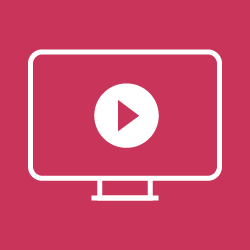
Approach 1:
Embed Language and Navigational Skills into Content
Embed Language and Navigational Skills into Content
More About this Approach
Starting with the specific topic or task a learner wants to do, an instructor may choose to find a pre-made lesson plan that provides the content that the learner is wanting. When working with the learner, the instructor explains and embeds language and navigational strategies in a supplementary way into the learning session.
See it in Action!

Learn More
For learners who want to increase their confidence in using iPads, you might use the iPad Learning Series for planning lessons. One example of a lesson planning resource is the one below from cbal (Columbia Basin Alliance for Literacy). The lesson plans include great pictures and plain language instructions. Embedding the language and navigational skills might involve talking about the verbal and visual language of the icons in the section called “Navigating the Home Screen” (page 9). You could ask learners to locate some of the specific icons on their own device’s screen. Using the Cues & Clues navigational strategies like “Read, Read, Read” and “Edges are Important” will help learners find apps on their screen. Throughout the class, Cues & Clues and key language may be used to help learners problem solve and accomplish tasks while going through the iPad lesson plans.
e.g. Having an iPad Learning Series and using this resource:
https://cbal.org/wp-content/uploads/2022/11/iPad-Curriculum_October-2022.pdf
Here's a short video where Monica Leong demonstrates what this approach might look like when instructing how to find downloads:
Let's have a look at devices learners use and the materials instructors use in this Approach, along with how to plan for learning.
Devices Used
Learning digital skills best happens when learners have the opportunity for a hands-on approach.
If the class focuses on using a specific device, it is helpful to have that device available for learners to apply their learning. For example, a course on "How to Use an Ipad" should include iPads for learners to use for hands-on instruction.


Instructional Materials
Here are some places where you can find content to use when working with learners:
A variety of lesson planning resources can be found in the “Resources” section of the CALP Portal, categorized as “Basic Digital Skills.”
There are also great resources available from ABC Life Literacy Canada here: https://abcconnectforlearning.ca/resources/ .
They also have lesson planning resources specific to using the internet here: https://calp.ca/resources/abc-internet-matters.htm
*Be sure to click on the “Resources” tab at the top for specific areas you may want information about.
GCFGlobal has a variety of resources including many on Basic Digital Skills that can be found here: https://edu.gcfglobal.org/en/subjects/basic-skills/
Resources for various skill levels are available from the Government of Alberta here: https://digitalliteracy.alberta.ca/

Planning for Learning
Using the skills-based approach to learning, means that the approaches are learner-led, focusing on what the learner needs and wants to be able to do. It also means that instead of starting with instruction (followed by application), the learner starts with doing or creating. Right from the beginning of the session, the learner is clicking on their own device and exploring the options available to them. As they interact with their devices they are learning essential language and navigational strategies needed to be successful in accomplishing their desired task.
Below are three steps that are important for instructors to take if they are using this first approach.
Assess
Assess what the learner(s) wants to learn about digital devices – a task they want to do, a specific device they want to understand better, etc.
Planning for Learning begins with the learner:
What do they want to be able to do?
Once you know what a learner wants to be able to do, you can then assess:
What can the learner already do?
What skills gaps are there between what they can do and what they want to be able to do?
Once you know the answers to these questions, you can find and customize related material and embed digital language and navigational strategies into the material while teaching the skills the learner needs in order to reach their goal.
Find & Customize
Based on your assessment, find lesson plans that include the content the learner(s) wants to understand.
As you prepare for the class or tutoring session, look at the pre-made lesson plan and determine:
What language do the learners need to know to understand the content?
What navigational strategies might they need to know how to use?
Embed
Embed the explanations of language learning and navigational strategies into the lesson plan content, as needed, as you go through the content.

